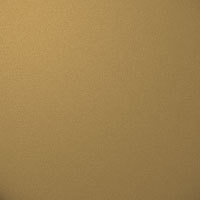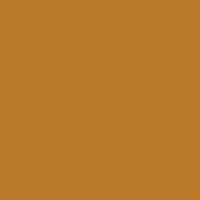Habitat bright ideas with Fleur Thorpe – DIY projects
Create your own colourful diya lamps to add colour and light to your home.
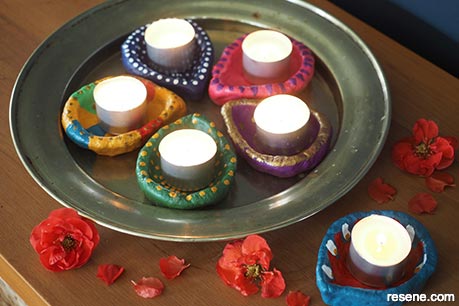
 Step 1
Step 1
Mix together two cups of plain flour, one cup of salt and one cup of water. Knead to make a firm dough. Form into tear-drop shaped diya lamps. Leave these for a few days to air dry or you can cook them in a low oven 120-150 degrees Celsius until dry.
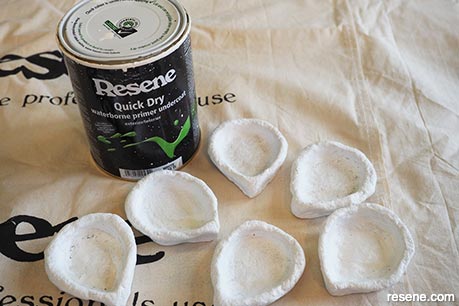 Step 2
Step 2
Prime the lamps with one coat of Resene Quick Dry.
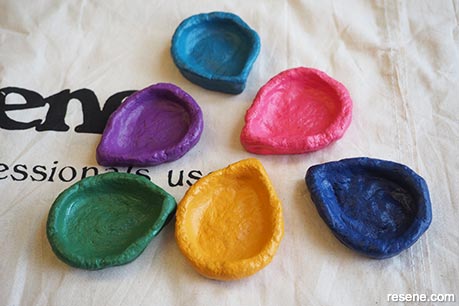 Step 3
Step 3
Once the primer is dry, give each lamp two coats of your chosen base colour. Fleur used Resene Pirate Gold, Resene Drop Dead Gorgeous, Resene Boost, Resene Lucky Point, Resene Parsley and Resene Showstopper.
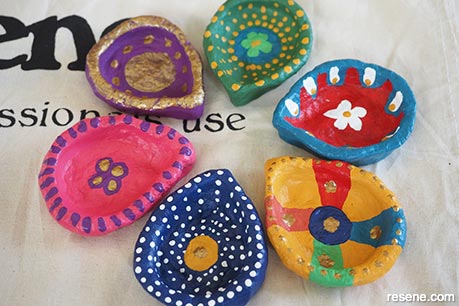 Step 4
Step 4
After the base paint has dried, have fun decorating your lamps. Fleur added some Resene Gold Dust metallic paint for a nice shiny look. The end of a paintbrush is good for making dots.
 Step 5
Step 5
Place the lamps on a plate or tray and add tealights. While traditionally diya lamps are filled with oil, tealights are a safer alternative for most families.
 Finished project
Finished project
Wall painted in Resene Dark Knight.
Top tip: For a high gloss finish, apply Resene Aquaclear gloss or Resene Concrete Clear gloss over the painted finish.


Styling and images by Fleur Thorpe. Sep 2022.
Habitat bright ideas
Need to add colour, pattern or a little creativity to your place? Check out these easy step by step DIY project ideas created in collaboration with Fleur Thorpe. We hope you enjoy making and painting these bright ideas and bringing colour to your home inside or out.
Order online now:
Testpots |
Paints |
Primers and Sealers |
Stains |
Clears |
Accessories
![]() Get inspired ! Subscribe
Get inspired ! Subscribe ![]() Get saving ! Apply for a DIY card
Get saving ! Apply for a DIY card
Can't find what you're looking for? Ask us!
Company profile | Terms | Privacy policy | Quality and environmental policy | Health and safety policy
Colours shown on this website are a representation only. Please refer to the actual paint or product sample. Resene colour charts, testpots and samples are available for ordering online. See measurements/conversions for more details on how electronic colour values are achieved.
What's new | Specifiers | Painters | DIYers | Artists | Kids | Sitemap | Home | TOP ⇧


